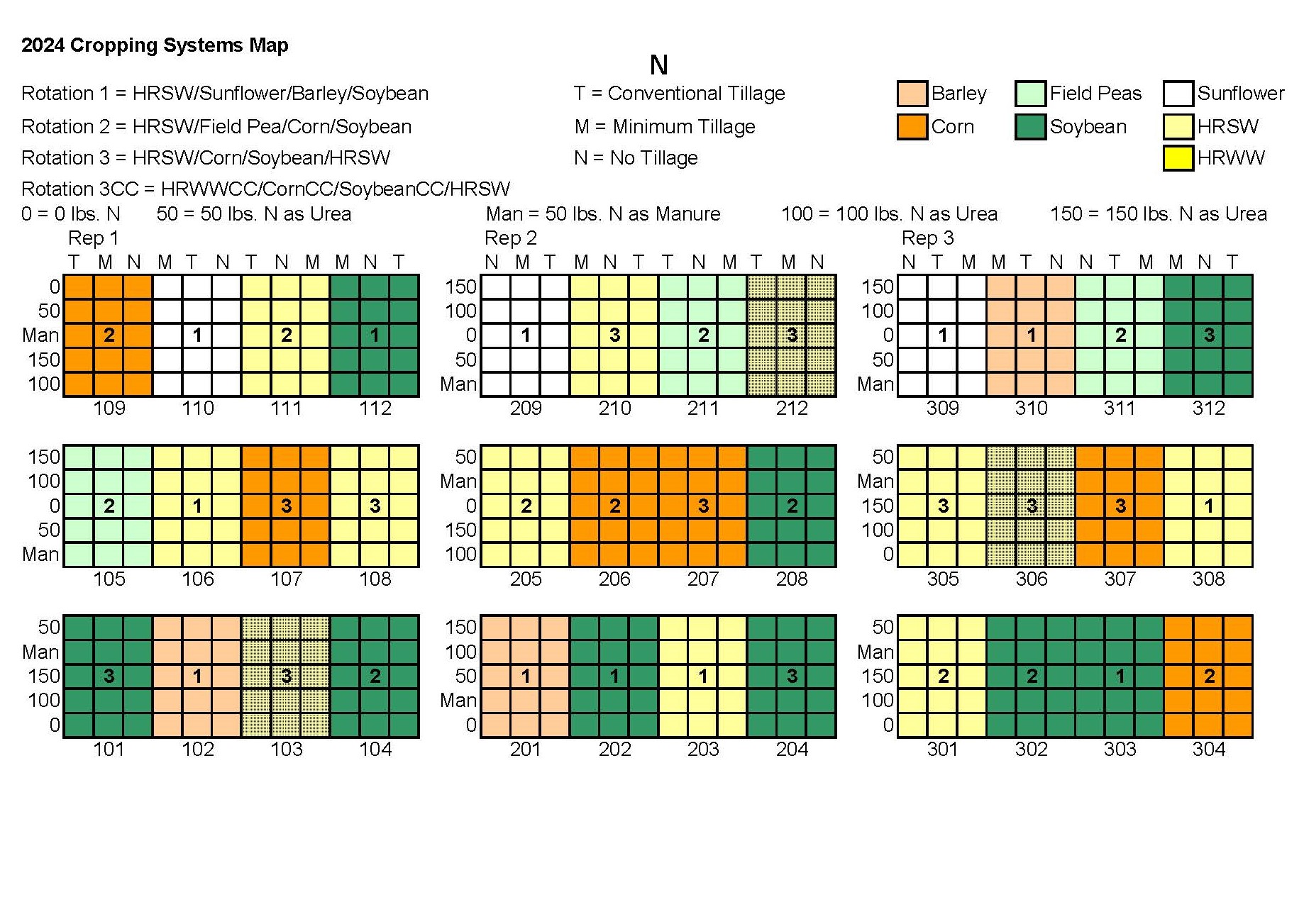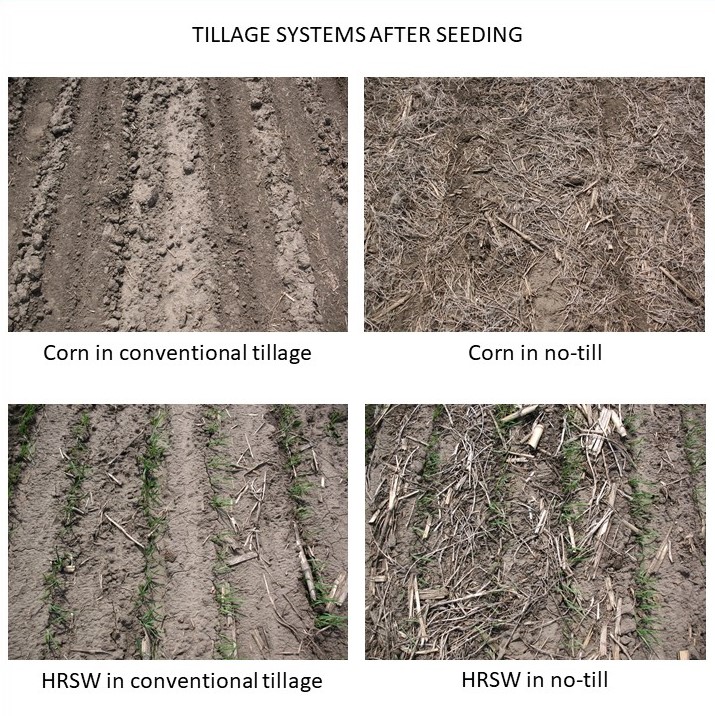Long-term Cropping Systems Study: Improving soils
In 1987, a long-term cropping systems study started at the NDSU Carrington Research Extension Center. Three sets of 4-year crop rotations are replicated three times each year. The ninth cycle ended in 2019.
The original base rotation, maintained until 2003, was: Hard Red Spring Wheat/Sunflower/Barley/Fallow. At the beginning of the fifth cycle in 2003, the base rotation was updated to replace Fallow with Soybean. The other two current rotations are: Hard Red Spring Wheat/Field Pea/Corn/Soybean, and Hard Red Winter Wheat/Corn/Soybean/Hard Re Spring Wheat. Each crop within each rotation is planted every year.

The fertilizer treatments are: 1) urea broadcast applied each spring to all plots, except field peas and soybeans, at 0, 50, 100 or 150 pounds of nitrogen (N) per acre and 2) composted beef feedlot manure applied once at 200 pounds of N the first year of each cycle. These treatments are imposed in strips perpendicular to the three tillage systems: conventional, minimum tillage, and no till resulting in 15 sub-plots within each crop.
The conventional tillage system starts with disking shortly after combining, followed by chisel plowing later in the fall. Then in the spring the ground is worked with a field cultivator prior to seeding or planting. The minimum tillage has become more of a rotational tillage system to reflect current reduced tillage farming practices of the area. It is essentially no-till except the fall prior to corn and sunflowers. That fall and the following spring it is worked just like the previously mentioned conventional tillage treatment. The no-till treatment is just as it sounds there is no tillage performed except what disturbance is created by the disk drill or planter.

The goal of the study is to determine the affects of tillage system, N fertility level and source, and crop rotation and the combination of these parameters have crop production and the soil.
Today’s update is about how the soil organic matter and pH have changed since the study began to 2022. This land was conventionally tilled in this rotation: Hard Red Spring Wheat/Sunflower/Barley/Fallow. The percentage of organic matter was 3.2 and pH was 6.8 in 1987.
| Tillage System | Fertility Treatment | pH | OM % at 0-6" |
|---|---|---|---|
| Conventional | 0 lbs N | 6.6 | 3.4 |
| Minimum | 0 lbs N | 6.6 | 3.3 |
| No-Till | 0 lbs N | 6.5 | 3.5 |
| Conventional | 50 lbs N | 6.5 | 3.6 |
| Minimum | 50 lbs N | 6.3 | 3.7 |
| No-Till | 50 lbs N | 6.2 | 3.8 |
| Conventional | 100 lbs N | 6.0 | 3.4 |
| Minimum | 100 lbs N | 6.1 | 3.6 |
| No-Till | 100 lbs N | 6.1 | 3.7 |
| Conventional | 150 lbs N | 5.9 | 3.5 |
| Minimum | 150 lbs N | 5.9 | 3.6 |
| No-Till | 150 lbs N | 5.7 | 3.7 |
| Conventional | Manure | 7.2 | 3.9 |
| Minimum | Manure | 7.2 | 4.0 |
| No-Till | Manure | 7.1 | 4.3 |
| Average | 6.4 | 3.7 | |
| C.V. (%) | 7.8 | 15.0 | |
| LSD 0.05 | NS | 0.3 |
The pH has decreased with increasing nitrogen fertilizer rate as would be expected since the conversion from fertilizer nitrate to plant available form releases hydrogen atoms into the soil which decreases pH. The composted manure treatment doesn’t decrease the pH as most of its nitrogen isn’t in nitrate form. It is statistically non-significant (NS) since each fertilizer rate behaved the same across tillage systems.
Organic matter has increased across all tillage systems and fertilizer rates. How can that be? This was achieved by intensifying the crop rotation in a couple ways: 1) by growing a crop every year vs a 3-out-of-4 years with fallow at the beginning 2) by incorporating more high-residue crops like corn in the non-control rotations. In addition, the reduced tillage systems don’t burn up organic matter with each tillage pass. This along with the composted manure treatment has increased organic matter by 1.1% since the start of the study. This is very significant because 1) each 1% increase in soil organic matter enables soil to store an additional 1 inch of moisture (more drought insurance and less runoff) and 2) each 1% increase in soil organic matter captures 20 to 40 pounds N per acre, saving that much in purchased fertilizers. NDSU Soil Scientist David Franzen has documented that continuous no-till requires 50 fewer pounds N per acre. Also, increased soil biology mineralizes and releases more nutrients for plant uptake.
Ezra Aberle
Ezra.Aberle@ndsu.edu
Agronomy Research Specialist
